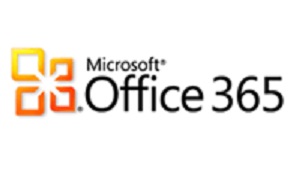

Microsoft is readying the launch of Office 365, an online productivity platform that serves as the company’s next big bet on the cloud.
Microsoft chief executive Steve Ballmer is expected to headline the 28 June event at New York City’s Skylight Soho, the same venue that hosted the Windows 7 launch in October 2009.
Office 365 links together Microsoft Office, SharePoint Online, Exchange Online and Lync Online for a starting price of $6 (£4)per user per month. On top of that, Microsoft is also offering an Office 365 Marketplace with productivity apps and professional services. June’s public beta of Office 365 followed a limited beta launched in October 2010.
In essence, Office 365 is a rebranding of the company’s BPOS (Business Productivity Online Suite), which bundled products such as SharePoint Online. Microsoft hopes that Office’s built-in cachet will draw more users to embrace a cloud service, arguing that companies will save the money and headaches associated with maintaining on-premises servers and other IT infrastructure. The subscription model also ensures Microsoft a steady stream of month-over-month revenue.
In order to seize that revenue, however, Microsoft will need to face down Google, which has devoted similarly enormous resources to developing and deploying its own cloud-based offerings for businesses and consumers. Indeed, on the eve of Office 365’s launch, Google launched a minor public-relations offensive designed to position its Google Apps as the better choice in cloud-based productivity software.
“Office 365 is built for Microsoft. Apps is built for choice,” Shan Sinha, Google Apps’ product manager, wrote in a June 27 posting on the Official Google Enterprise Blog. “Office 365 is optimized for Windows-based PCs and devices, which reduces your flexibility. Our applications are designed to work well on any device, on any operating system.”
Over the past few months, the animosity between Google and Microsoft has descended to an ever-deeper depth. Google even sued the federal government after the Department of the Interior allegedly denied its bid to update an email and messaging system – a $59 million, five-year contract that had gone to Microsoft’s BPOS-Federal suite.
Traditional desktop-bound Office certainly dominates the vast majority of business environments. Near the end of 2010, research firm Gartner asked some 204 IT pros about their businesses’ productivity software, then used that data in a research note that estimated, in part, the Office install base. Office 2003 and 2007 dominated that list, with a respective 33 percent and 41 percent share, while Office 2010 followed behind with 24 percent.
“The survey was taken at the Gartner Symposium in October, so respondents are not representative of smaller organisations, where we believe Google Apps is more popular,” Gartner analyst Michael Silver told eWEEK on 18 May. “Less than 1 percent are using Google Docs now and about 2 percent will be using it by [year-end 2011]. Moreover, most organisations are still using it in addition to Office and not to replace all their Microsoft Office licences.”
Whatever its market share, Google will fight to hold it as Microsoft rolls out Office 365. “You can’t just take legacy, desktop software, move some of it to a data centre and call it ‘cloud,'” Sinha added in that blog posting. “Apps was born for the web and we’ve been serving hundreds of millions of users for years.”
OpenAI chief operating officer Brad Lightcap to oversee international expansion as company consolidates lead in…
Chinese researchers publish details on device that could wreak havoc on undersea communications cables in…
Former Intel chief Gelsinger expands role at Gloo, becoming executive chairman and head of technology…
MEPs add to Commission pressure for second EU Chips Act amidst industry calls for renewed…
Smartphone maker Xiaomi reportedly raises about $5.5bn in Hong Kong share sale as it invests…
BYD's Qin L EV sedan starts at about half the price of Tesla's Model 3,…